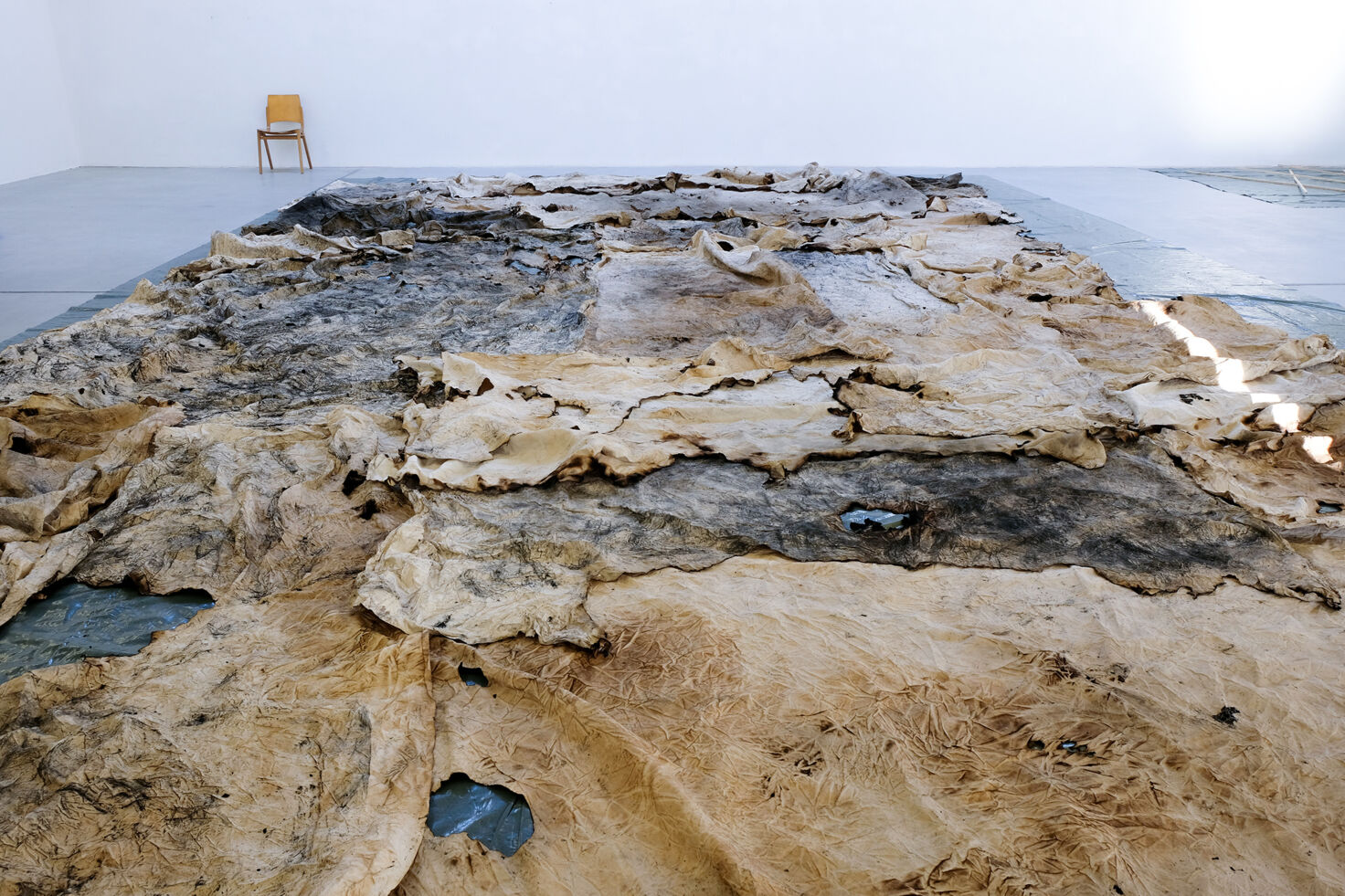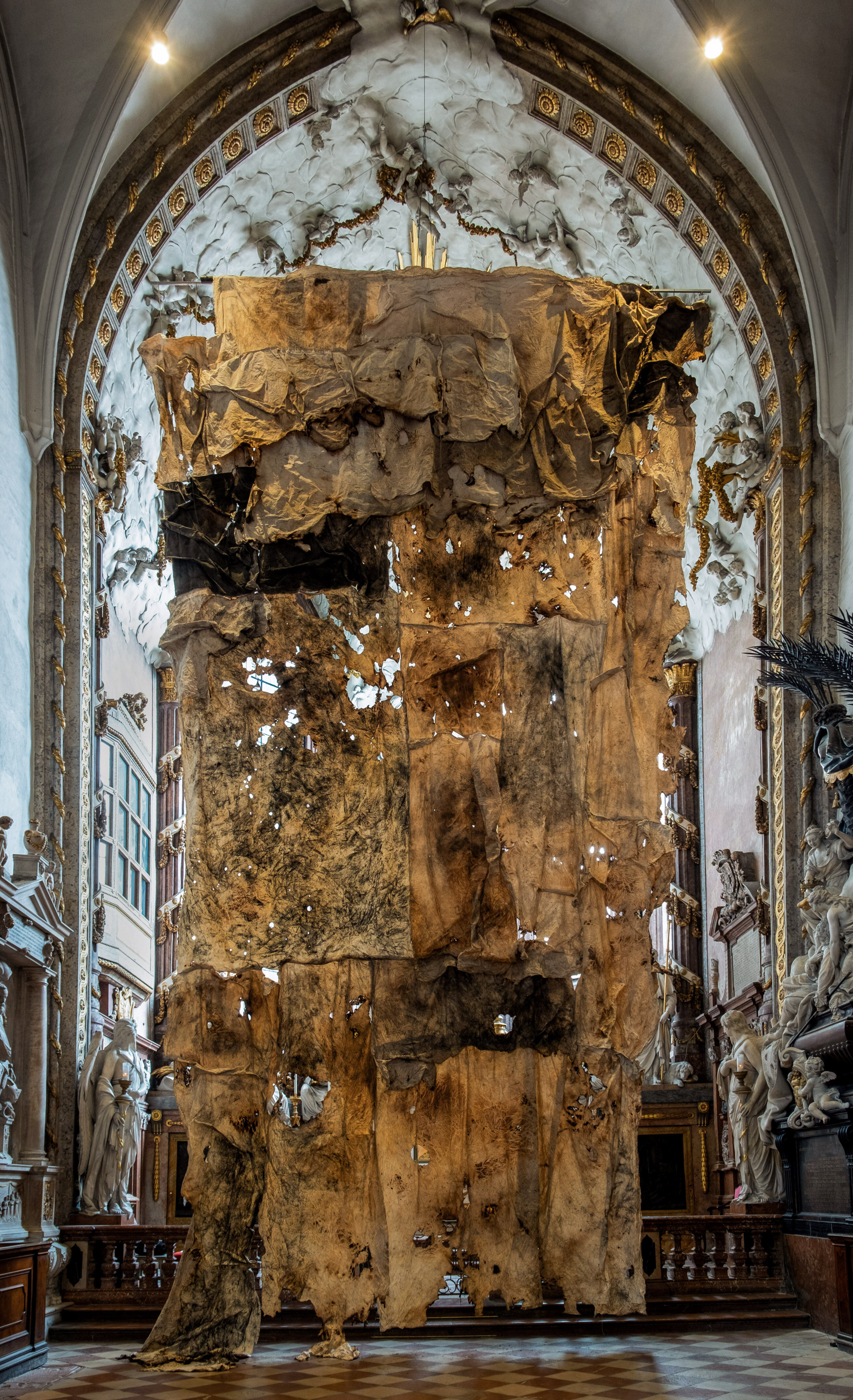
A picture of our time
Jakob Kirchmayr’s Lenten veil for St. Michaels Church covers its central location, the altar and will hang there for 40 days until Easter. As opposed to other similar veils, the cloth designed by Kirchmayr does not display any images to substitute for the hidden altar figures. In a time that has elevated transparency and visibility to dogmas, some people may find it difficult this. Yet, overcoming our desire to look is part of the point and peeking behind the veil would defeat the purpose, because conscious self-restraint only works if we take it seriously. The fasting performed by Christian’s during Lent to commemorate the 40 days Jesus Christ spent fasting in the desert, means more than dieting with added value from religion. When we take Kirchmayr’s abstract fasting cloth seriously as an invitation to visual and therefore spiritual restraint, “mental junk food” comes into view:
The videos that we mindlessly watch, the short messages that we constantly consume, wasting hours when we could be doing something meaningful: thinking our own thoughts, talking to our parents or children or doing something for other people, like the Tralalobe association, which helps refugees in Austria and provided Kirchmayr with three assistants for the realization of the cloth. A Lenten veil marks 40 days of non-ordinary time. When the tradition originated about a 1000 years ago, the focus was on fasting with the eyes. Later, people began to fill the apparent emptiness. Famous examples, such as the Gurk Lenten veil, are much richer in imagery than the altars they conceal. Jakob Kirchmayr’s abstract Lenten veil, on the other hand, connects to the origins of the tradition.
A comparison with the artist’s other works makes it clear that the abstract artist is not merely applying an existing style to a new theme. For this particular task, he consciously opted for self-restraint, thus exemplifying the renunciation to which he invites us with the veil.
Yet, the cloth is all but “empty” and meaningless. If viewers carefully interpret the traces that are visible here, it becomes clear that this Lenten veil does more than concealing: rather, the way in which it conceals also makes something visible. What this might be becomes clear when the artist himself describes the working process: “Influenced by gloomy predictions for the future, the economic strategies of large corporations, climate change, the ongoing global destruction of nature and the horrific armed conflicts of our time, I chose water and fire instead of pencils and paint as transformative media – soil, ash, smoke and coal for coloring.”
The Lenten veil thus reflects a time of destruction. It was sewn together by refugees and an Austrian artist. The work on it brought back memories of suffering and destruction, but also the joy of a new beginning together. The result is an image of renunciation that invites mindfulness; an image of our destroyed world, but also an image of healing; one of hope, resilience, growth and solidarity – perhaps also a picture of a patchwork society made of different parts and different backgrounds, but which nevertheless sticks together and shares common goals and values. At the same time, the work makes it clear how fragile and full of gaps this society is. Without conscious effort and care, it threatens to tear itself apart. Only if we finally dispense with the unnecessary, to make room for the essentials and for others, we may be able to create a world worth living in. In order to achieve this, fasting - in the sense of spiritual and material asceticism – must neither be limited to food nor to the time of Lent. Dr. Klaus Speidel, Vienna, Ash Wednesday 2024
